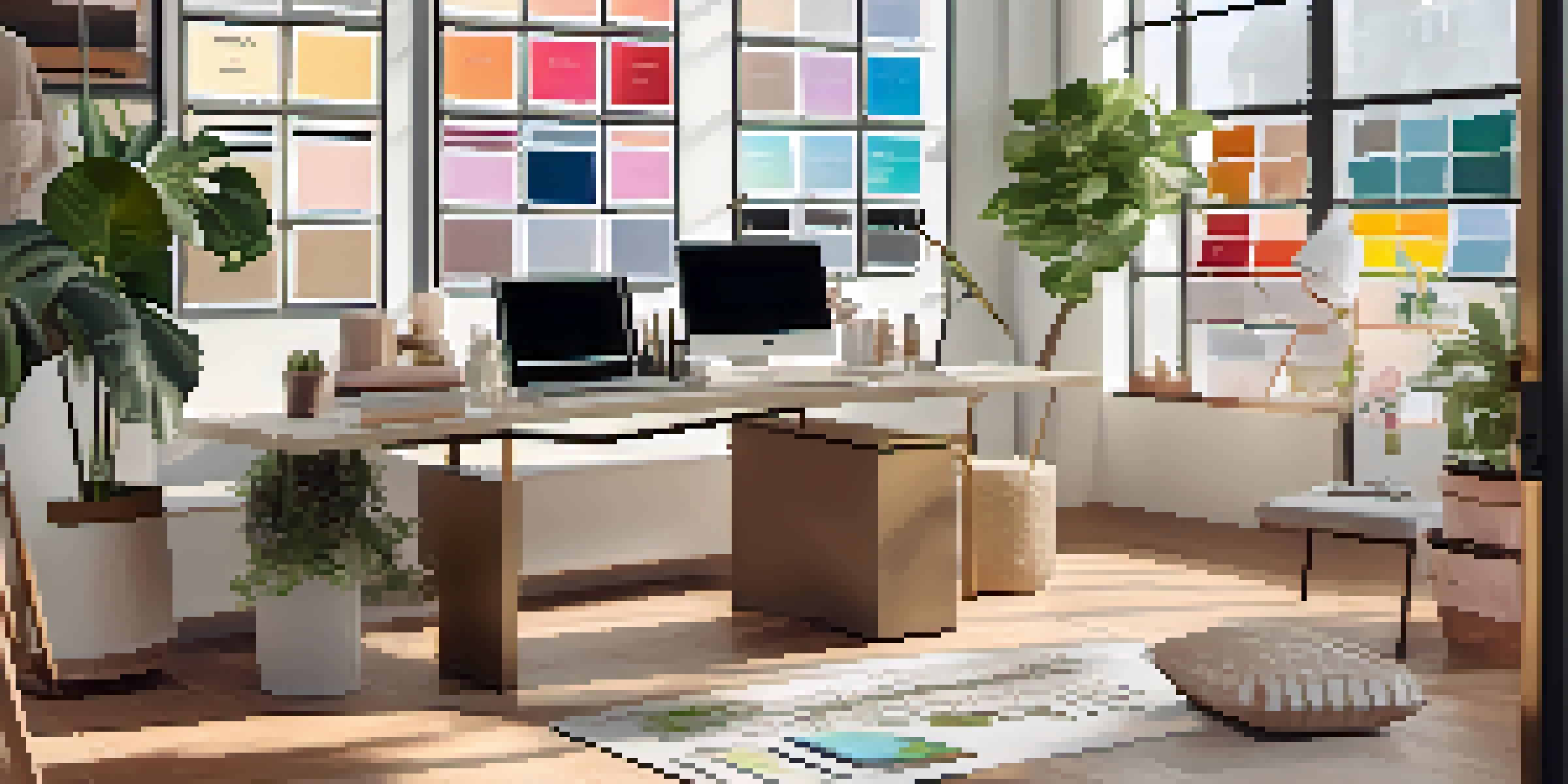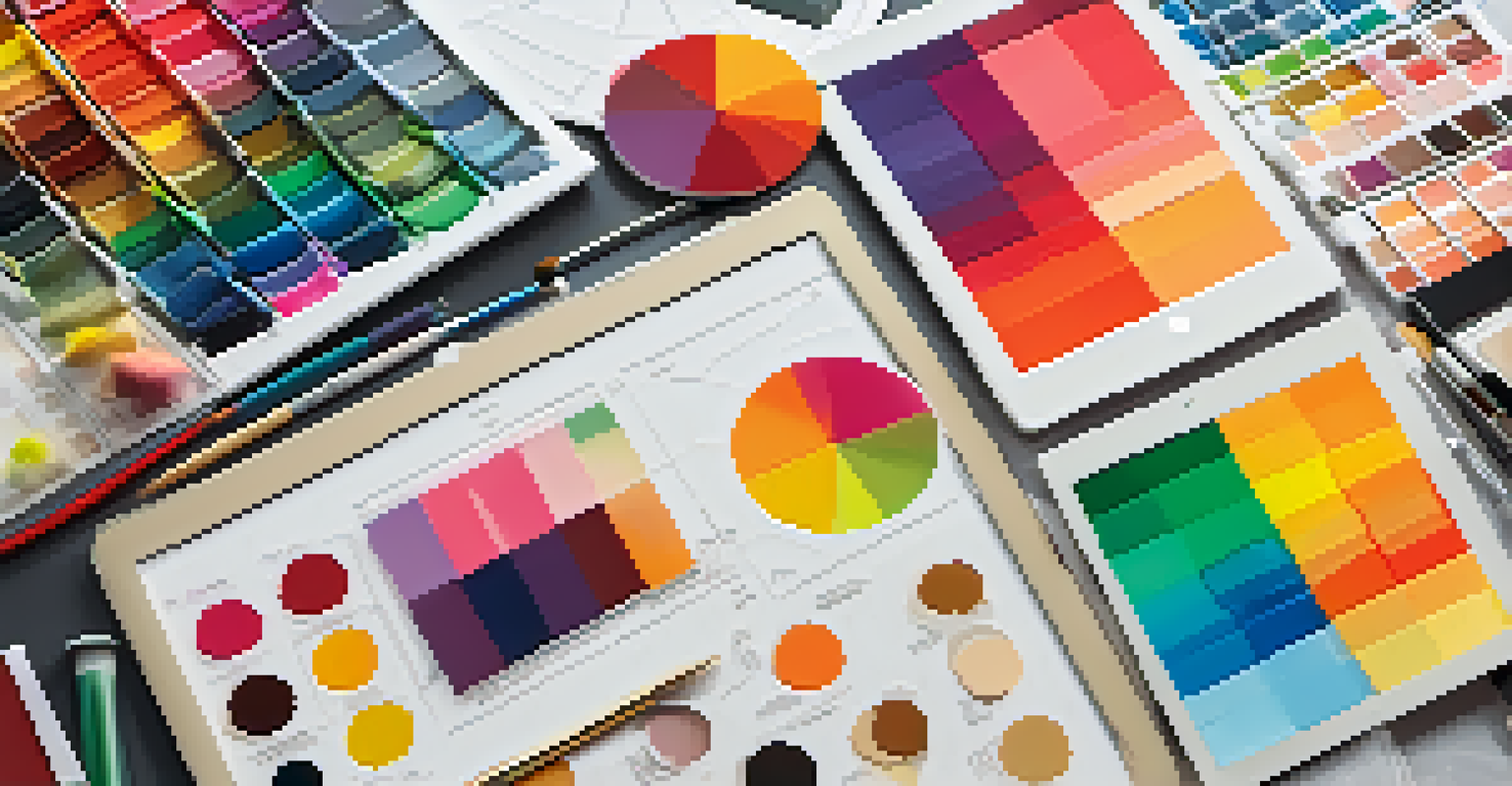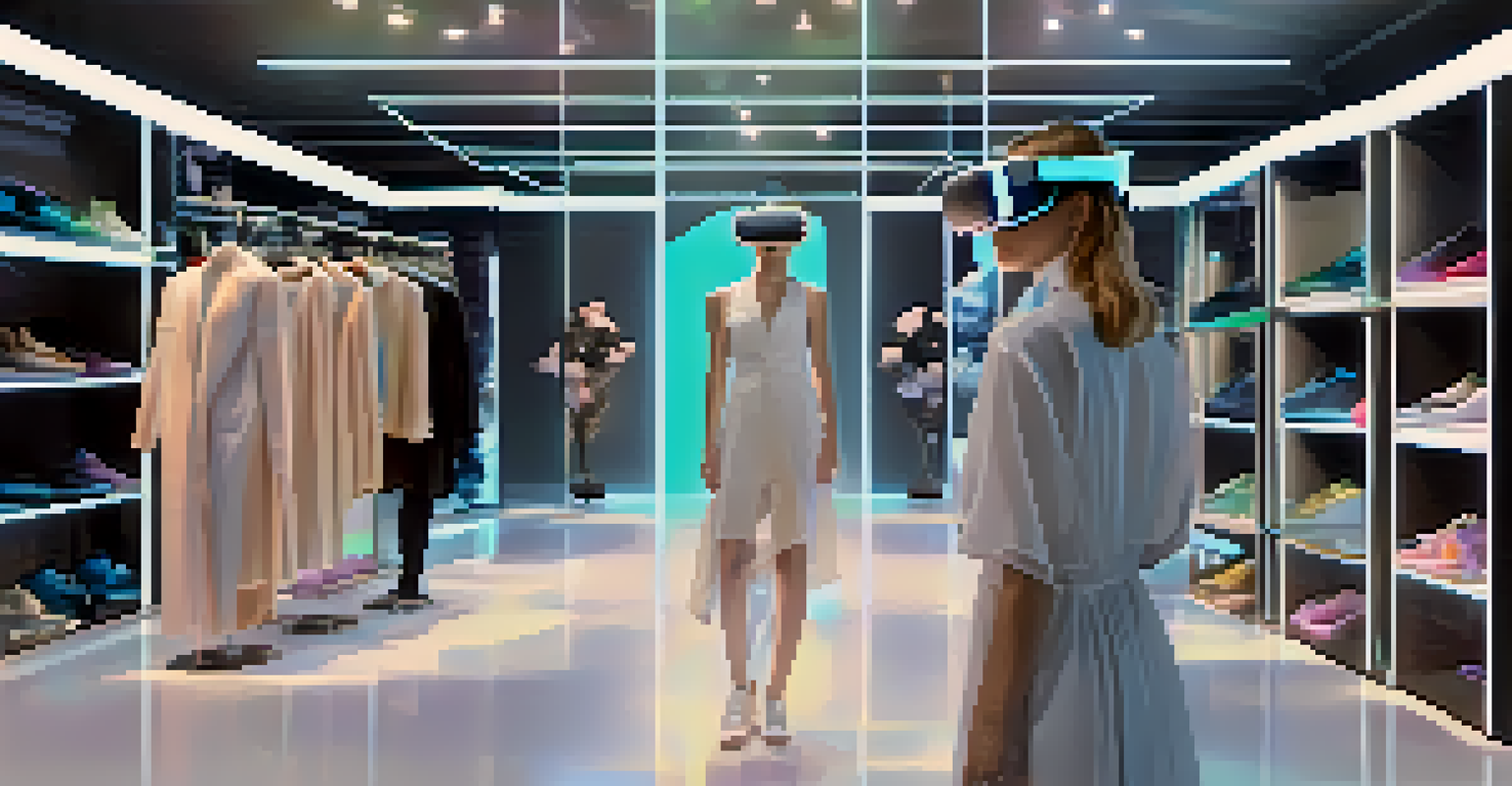Understanding Fashion Forecasting Tools for Industry Success

What is Fashion Forecasting and Why It Matters
Fashion forecasting is the art and science of predicting future trends in the clothing industry. It helps brands stay ahead of consumer preferences and market shifts, ensuring they remain relevant and appealing. By understanding what styles, colors, and fabrics will be in demand, companies can streamline their design processes and inventory management.
Fashion is the armor to survive the reality of everyday life.
Imagine trying to navigate a ship without a compass; that’s what launching a fashion line without forecasting feels like. You could end up lost in a sea of styles that don't resonate with your audience. Fashion forecasting provides direction and clarity, allowing businesses to make informed decisions and minimize risks.
Ultimately, effective forecasting not only boosts a brand's chances for success but also enhances the overall consumer experience by delivering what people want when they want it.
Key Fashion Forecasting Tools to Know
There are various fashion forecasting tools that professionals rely on, each offering unique insights. Some of the most popular include trend reports, color forecasting tools, and social media analytics. These tools can help identify emerging patterns and consumer behaviors that are essential for effective decision-making.

For instance, trend reports provide comprehensive analyses of upcoming styles and market shifts, often based on extensive research and expert opinions. On the other hand, color forecasting tools focus specifically on color trends, which can significantly influence a collection's appeal. By utilizing a mix of these tools, brands can develop a well-rounded strategy.
Fashion Forecasting Explained
Fashion forecasting predicts future trends, helping brands align with consumer preferences and market shifts.
Moreover, social media analytics can reveal what styles are gaining traction among consumers, giving businesses a real-time look into their target audience's preferences. By integrating these resources, brands can create more cohesive and timely collections.
How to Choose the Right Forecasting Tool
Selecting the right forecasting tool depends on various factors, including your brand's size, target market, and specific needs. Start by assessing the type of insights you require—are you looking for color trends, style predictions, or something else? This will help narrow down your options.
Trends come and go, but style is eternal.
For smaller brands, free or low-cost tools may suffice, while larger companies may benefit from comprehensive platforms that offer in-depth analytics. Additionally, consider the ease of use and whether the tool integrates well with your existing processes.
Finally, don’t forget to read reviews and seek recommendations from industry peers. A tool that works well for one brand may not necessarily be the best fit for another, so taking the time to evaluate your options is crucial.
The Role of Data in Fashion Forecasting
Data plays a pivotal role in fashion forecasting, as it allows brands to analyze consumer behavior, sales trends, and market conditions. By leveraging big data, fashion companies can make more accurate predictions and tailor their collections accordingly. This data-driven approach helps mitigate risks and optimize inventory.
For example, analyzing past sales data can reveal which styles or colors performed well, guiding future design choices. Additionally, incorporating real-time data from social media and e-commerce platforms can provide instant feedback on consumer preferences. This way, brands can pivot quickly if needed.
Choosing the Right Tools
Selecting appropriate forecasting tools depends on brand size and specific insights needed to inform design and marketing strategies.
In essence, data transforms fashion forecasting from a guesswork process into a strategic endeavor, enabling brands to make informed decisions that align with market demands.
Integrating Forecasting Tools into Your Strategy
Successfully incorporating forecasting tools into your business strategy requires a structured approach. Start by integrating these tools into your design and production processes to ensure that insights are utilized effectively. This integration helps bridge the gap between forecasting and execution.
Regularly review the data and insights generated by your forecasting tools to adjust your strategies as necessary. This could mean shifting your design focus based on emerging trends or modifying your marketing approach to highlight popular styles. Flexibility is key.
Additionally, fostering a culture of collaboration within your team can enhance the effectiveness of these tools. Encourage open discussions about insights and trends, ensuring everyone is aligned and working towards the same goals.
Challenges in Fashion Forecasting and How to Overcome Them
Despite its importance, fashion forecasting has its challenges. Rapid changes in consumer preferences and market dynamics can make it difficult to predict trends accurately. Additionally, external factors like economic shifts can further complicate the forecasting process.
To counter these challenges, brands should adopt a proactive approach. Stay informed about global events, emerging technologies, and shifting cultural trends that could influence consumer behavior. This awareness can help you make better predictions and adjust your strategies accordingly.
Data-Driven Predictions
Leveraging data enables brands to make informed decisions, turning fashion forecasting into a strategic process.
Furthermore, embracing a flexible mindset allows brands to pivot quickly when faced with unexpected changes. By combining agility with sound forecasting tools, businesses can navigate the complexities of the fashion industry more effectively.
Future Trends in Fashion Forecasting Tools
As technology continues to evolve, so too will fashion forecasting tools. Innovations like artificial intelligence and machine learning are beginning to play significant roles in predicting trends more accurately than ever before. These technologies can analyze vast amounts of data quickly, providing insights that were previously unattainable.
Moreover, the integration of augmented reality (AR) and virtual reality (VR) could reshape how brands visualize and test trends before they hit the market. Imagine being able to see how a collection might perform in different environments or demographics without producing a single item.

As we look ahead, brands that embrace these advancements will likely find themselves at a competitive advantage, making it essential to keep an eye on emerging technologies and trends in forecasting.